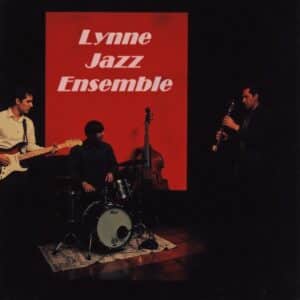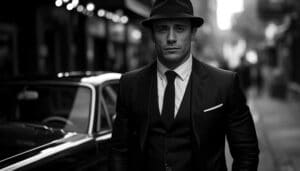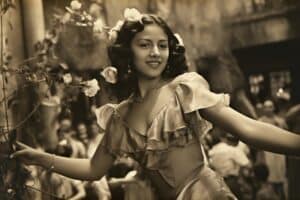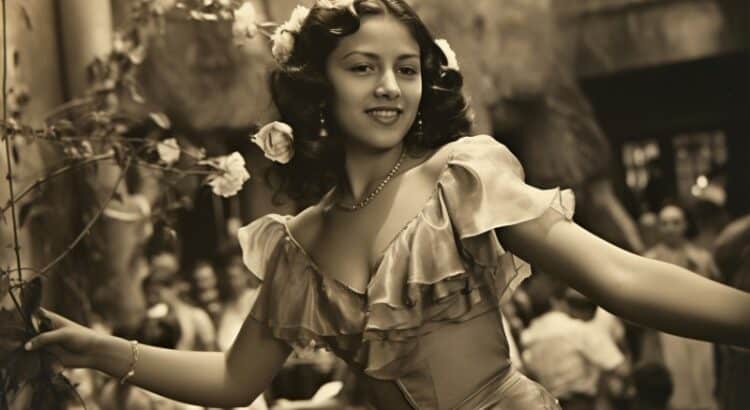Did you know that Lynne Publishing (the music company behind Shockwave-Sound.com) has its own jazz and vintage pop band? Lynne Jazz Ensemble records not only its own original content in classic jazz combo style but also plays and records cover versions of classic and timeless jazz and pop songs, such as “Singin’ in the Rain,” “Puttin’ on the Ritz,” and many others.
Every 1st of January is Public Domain Day and Lynne Jazz Ensemble keep their eyes on any much-loved, famous, classic, and timeless jazz- and pop songs that come into the Public Domain in the USA. They go to work on rehearsing, playing, recording and releasing their own cover versions.

So far, the following songs have been recorded by Lynne Jazz Ensemble and are currently available at Shockwave-Sound.com for royalty-free licensing in the USA:
-

Old Hollywood classic musicals
Singin’ in the Rain (vocal and instrumental versions) - Ain’t Misbehavin’ (2 different vocal versions and an instrumental)
- St. Louis Blues (vocal and instrumental versions)
- I Can’t Give You Anything But Love, Baby (vocal and instrumental versions)
- When You’re Smiling (vocal and instrumental versions)
- Let’s Do It (Let’s Fall In Love) (vocal and instrumental versions)
- Makin’ Whoopee (vocal and instrumental versions)
- My Blue Heaven (2 different vocal and instrumental versions)
- I Wanna Be Loved By You (vocal and instrumental versions)
- Mack the Knife (vocal and instrumental versions)
- Am I Blue? (vocal and instrumental versions)
- It Had To Be You (vocal and instrumental versions)
- Puttin’ on the Ritz (vocal and instrumental versions)
- S’ Wonderful (vocal and instrumental versions)
- After You’ve Gone (vocal and instrumental versions)
- Happy Days Are Here Again (vocal and instrumental versions)
- Tiptoe Thru’ the Tulips (vocal and instrumental versions)
More songs will be added to this list, as the Lynne Jazz Ensemble continues to scour the “Public domain day” lists and add more songs to their repertoire each year.
USA: Original Publication + 95 years = public domain
In the United States, copyright law stipulates that any original musical composition (and its lyrics) become “Public Domain” after the end of the 95th year after the original publication. In other words, when a musical work is first published, you count 95 years forward and then you wait until the end of that year. And then, from the 1st of January the following year, this song becomes Public Domain — which means that the people/community at large own it, and no longer in copyright to any particular person or company.
For example, a musical composition / song that is first published in 1928, became public domain (in the USA) from the 1st of January 2024. And so on.

Other countries: Death of creator + 70 or 100 years
In other countries, the law can be different from this. For example, in many countries, it’s not the date of first publication that counts; rather, it’s 70 years from the date of the death of the last living original composer/creator. So, as an example, Thomas “Fats” Waller died in 1943, so in the countries that have the “death + 70 years” law, any songs that he composed (not just sang) became public domain on the 1st of January 2014.
Some countries have a “death + 100 years” law. So, in the example above, songs composed by Thomas “Fats” Waller will not become public domain, in those countries, until 2044.

Copyright in the composition is separate from copyright in the sound recording
It’s important to understand that in any music recording there are two separate copyrights.
The copyright in the actual melody and lyrics (the “underlying composition”) becomes public domain in the USA 95 years after the original publication. But the copyright in the sound recording remains.
Let’s take the song “S’ Wonderful” as an example. The music (melody) was composed by George Gershwin and the lyrics were written by Ira Gershwin, and was first published in 1927, so it became public domain in the USA from the 1st of January 2023.
From this date, anybody is free to make their own original sound recording that contains this melody and lyrics, and the copyright in that sound recording then belongs to the creator (musician, singer) who performed and recorded that version. For example, if you sing the song “S’ Wonderful” and you record your singing, then you own the copyright in that sound recording.
So, when Lynne Jazz Ensemble rehearsed, played, recorded, mixed, mastered and released their own “S’ Wonderful” cover song, Lynne Jazz Ensemble owns the copyright in that sound recording.
If you want to use this recording for a TV commercial, as background music on your telephone on-hold system, or in a YouTube video, you need to get permission (license) from the Lynne Jazz Ensemble. You can buy this license from Shockwave-sound.com. For a one-time, reasonable license payment, you get a lifetime license to use the track, royalty-free, in your media productions, forever.
Usage is, however, limited to the countries/regions where the original composition is in the Public Domain. Because when you are using this song, you are using both the composition (melody/lyrics), and the sound recording of it.
For this reason, all of the Lynne Jazz Ensemble cover versions of songs that have become public domain in the USA, but not necessarily in other countries, are marked at Shockwave-Sound.com as follows: [For licensing in USA only].
By the way, the copyright in the sound recording is a more complex picture, though, the USA have cleared it up pretty well in the “CLASSICS act” of 2018. If you wish to learn when exactly a sound recording becomes public domain in the USA, refer to this page about the CLASSICS act.
And one last thing. f you just want to listen, but not license the music for use in media, you can enjoy personal listening to Lynne Jazz Ensemble songs at Spotify or at YouTube Music. Happy listening!






